Zhang Zikang: Presenting the Development System of Chinese Art, Combining Technology with Art
TEXT:Emily Zhou DATE:2022.4.15
Editor’s Note: As a significant international art exhibition with more than a hundred year’s history, every edition of the Venice Biennale represents the cutting-edge dynamics of contemporary art, and predicts the development direction of art for the future. In 1907, Belgium Pavilion, the first national pavilion, was established. Subsequently, Hungary Pavilion, Germany Pavilion, British Pavilion, France Pavilion, and Russia Pavilion, were established in succession. The national pavilion has become a platform for international cultural exchange and increasingly represents every country’s “national cultural image”.
Recently, together with many details of the 59th Venice Biennale, it was announced that Zhang Zikang, the Director of CAFA Art Museum, would serve as the curator of the China Pavilion, while Sun Dongdong would serve as the assistant curator. Liu Jiayu, Wang Yuyang, Xu Lei, and the Central Academy of Fine Arts (CAFA) Institute of Sci-Tech Arts+Tsinghua Laboratory of Brain and Intelligence (TLBI) Group Project (abbr. AT Group), are invited to participate in the exhibition. In the past two decades, how has the presentation of the China Pavilion changed? What kind of Chinese art will be shown in this edition? Confronting the complex international situation brought by the pandemic and war, what can art do for us? In the following interview between Mr. Zhang Zikang and CAFA ART INFO, we discussed these questions as mentioned above.
Interview Date: 1st March, 2022
Interviewee: Zhang Zikang/Director of CAFA Art Museum, Professor and Doctoral Supervisor of CAFA
Interviewer: Yang Zhonghui/Editor of CAFA ART INFO
Translated by Emily Weimeng Zhou, edited by Sue/CAFA ART INFO
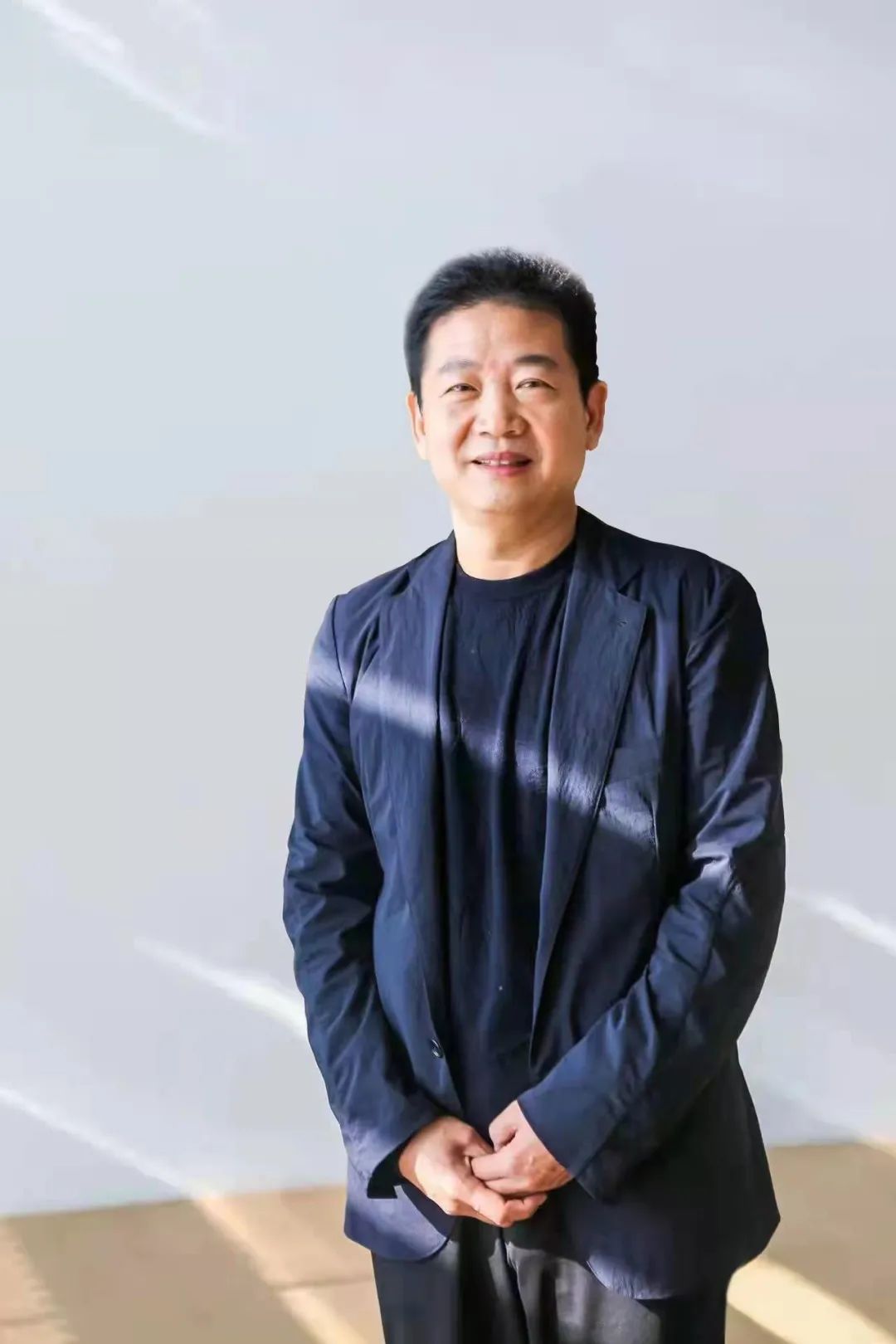
Zhang Zikang, the Director of CAFA Art Museum and the Curator of the China Pavilion at the 59th Venice Biennale
CAFA ART INFO: Hi Director Zhang! Congratulations on becoming the curator of the China Pavilion in this Venice Biennale. Can you briefly introduce your exhibition plan and its current progress?
Zhang Zikang: The exhibition of the China Pavilion futures the theme of “Meta-Scape”, inviting three artists and an art group to present in Arsenale and Giardini. In Giardini, Wang Yuyang’s “Snowman” (2021) will be presented, while “Jungle” (2021) by AT Group, “Correspondances” (2021) by Xu Lei, “Streaming Stillness” (2021) by Liu Jiayu, and “Wang Yuyang: Quarterly 2021” (2021) by Wang Yuyang, will be presented in the Arsenale area.
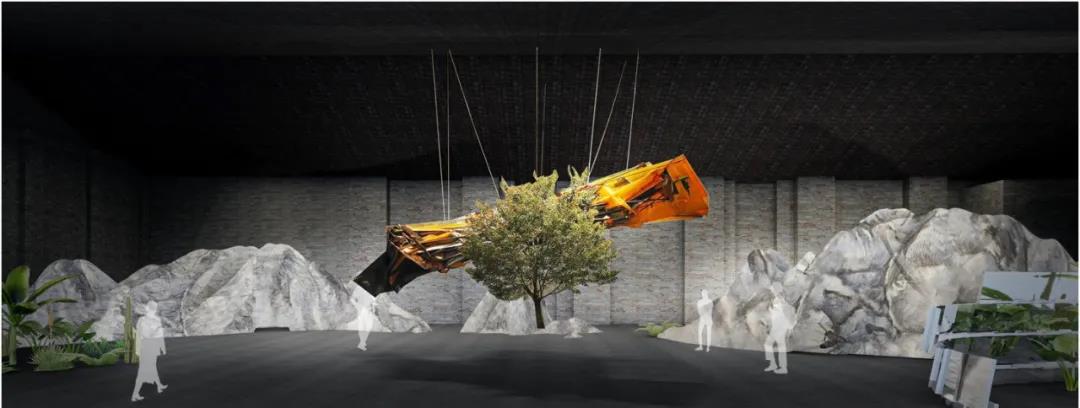
Design Sketch of the China Pavilion at the 59th Venice Biennale
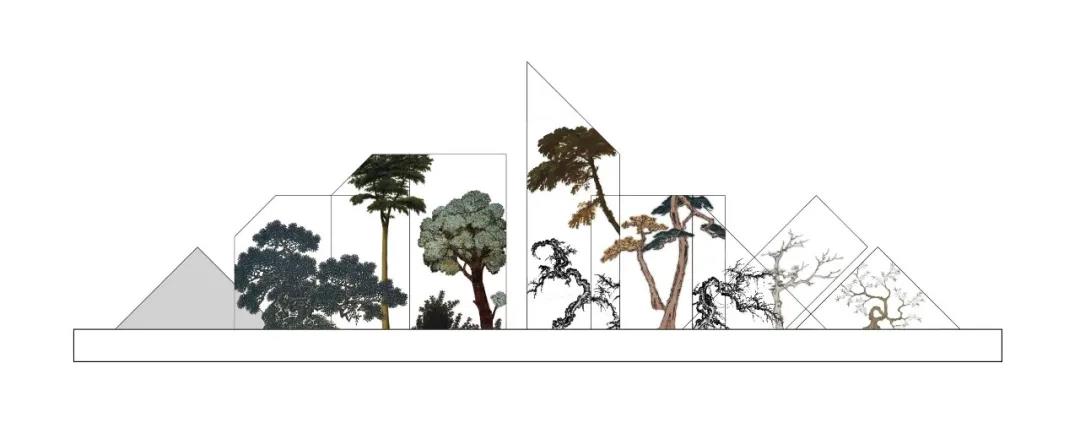

Xu Lei, "Correspondances", 266x350x48.5cm, acrylic, metal material, electric track, 2022
Xu Lei is an artist born in the 1960s. Although he is recognized as an artist with traditional Chinese painting skills, he has been involved in developing a wide range of knowledge and has completed deep research in different areas. In his articles, we can see his unique understanding of both eastern and western cultures. In this exhibition, his interactive installation “Correspondances” presents various landscapes shaped by the fusion of Chinese and western elements, indicating a constant change in social patterns nowadays. This work connects tradition with the current situation through a visual combination, presenting the artist’s thoughts from recent years.
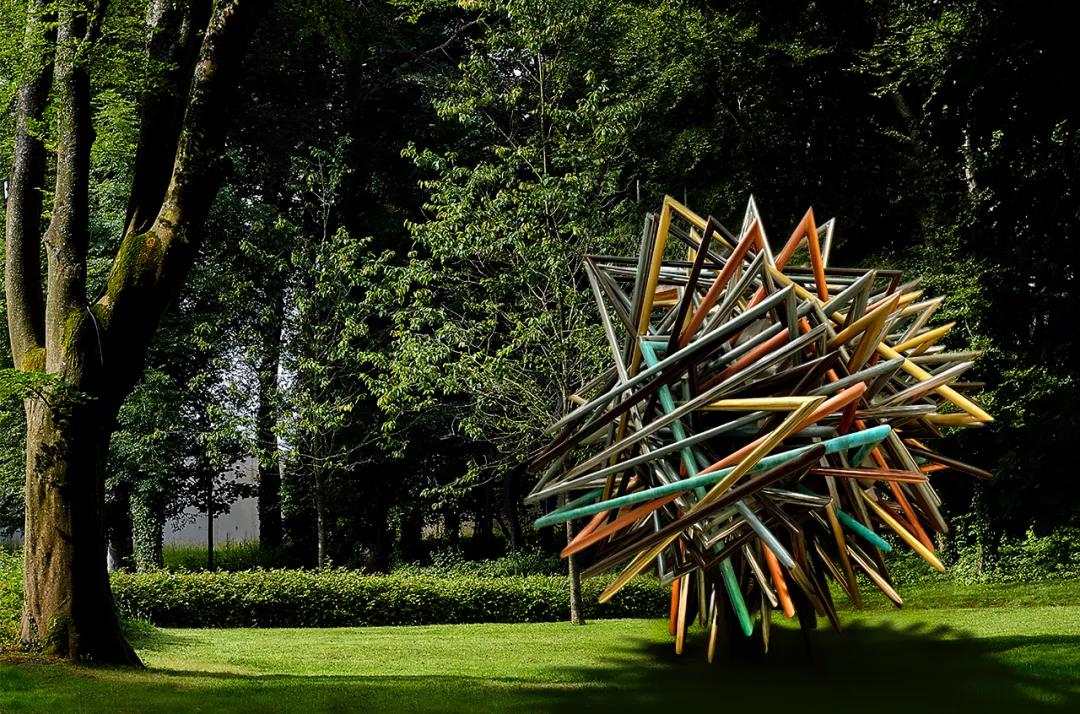
Wang Yuyang, “Snowman”, 265x190x285cm, brass, red copper, concrete, stainless steel, 2021
Wang Yuyang is an artist born in the 1970s, who has experienced the process of Chinese art from modern to contemporary. His interest in technology urges him to constantly think about the relationship between art and technology, practicing experimental art creations and conceptual art expressions. This makes all of his paintings, installations, videos, and digital works become related to digital technology. His creation reflects the experimental process during the development of Chinese art, which is embodied in the relationship between humans and nature. The works “Snowman” and “Wang Yuyang: Quarterly 2021” have been updated through in-depth and continuous thinking, spanning the development of experiments and time.
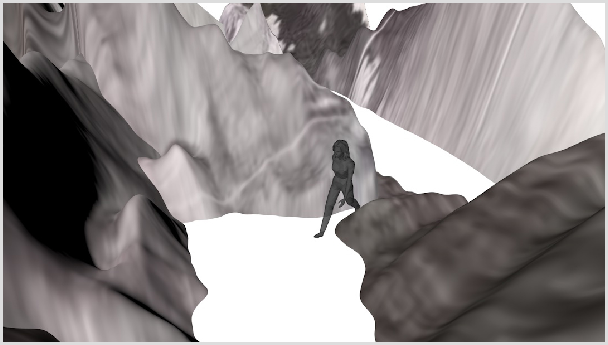
Liu Jiayu, “Streaming Stillness”, 3D Projection Mapping Installation, Dimensions: L: 14000cm W: 300cm H: 300cm, Concrete , Polystyrene, 2021
Liu Jiayu is an artist born in the 1990s. She has the experience of living and studying abroad and has participated in a number of international exhibitions which sparked various discussions. The participating work “Streaming Stillness” is a digital-generated work. By inputting more than 10,000 Chinese ink paintings into computer software, she has generated new works of art. Liu’s work has a cutting-edge creative concept, which represents the ideas of her generation.
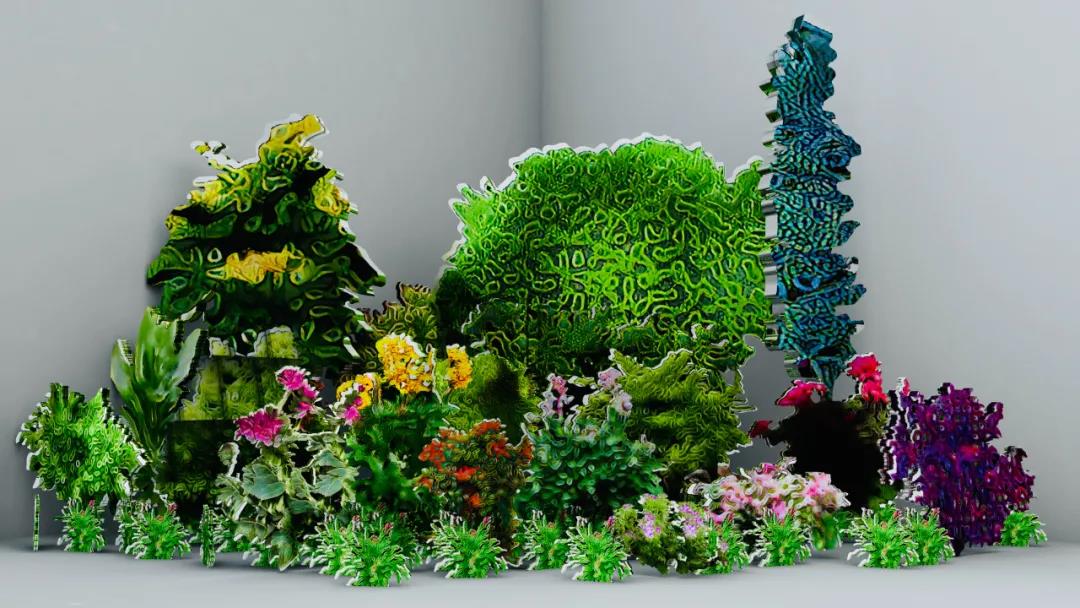
AT Group, “Jungle”,stainless steel plate, UV printing, machine learning, 2022
AT Group, a group of young artists from the joint project of the Central Academy of Fine Arts (CAFA) Institute of Sci-Tech Arts and Tsinghua Laboratory of Brain and Intelligence (TLBI). The work “Jungle” exhibited by the team features the deep learning of artificial intelligence. The artists guide the artificial intelligence to learn and recognize the plant images in the real world and therefore generate new virtual digital plants. The new virtual digital plants are printed on the mirror, from which the audience can see the world in the eyes of artificial intelligence, and can also follow the mirror image into a virtual jungle.
Currently, these works are all ready to be transported, and the exhibition layout is also in progress. Prior to the opening of the exhibition, we will go to the site to further improve the details.
CAFA ART INFO: How do you understand the theme “The Milk of Dream” of the Venice Biennale this year? How does the theme of the China Pavilion respond to it?
Zhang Zikang: The theme “The Milk of Dream” takes its title from The Milk of Dream, a children’s book by the Mexican surrealist artist Leonora Carrington. The main exhibition shows an imagination of the future by specifically concerning the representation of bodies and their metamorphoses, the relationship between individuals and technologies, and the connection between bodies and the Earth. By doing so, the exhibition intends to explore many uncertain problems in the present, this suggests various cognitions in different dimensions, and proposes the future-oriented thinking, which is consistent with the theme “Meta-Scape” from the China Pavilion.

The Themed Exhibition “The Milk of Dreams” at the 59th Venice Biennale
China’s high-tech developments, especially the achievements in artificial intelligence as well as brain and intelligence laboratories, are at the same level as many developed countries. Moreover, there is an increasing number of artists involving high-tech means in their art creations. Nowadays, science and technology have a significant impact on our life, culture, communication, understanding and behavior, among others, and the concept of Metaverse constantly updates the new business ideas and formats. Such an impact will undoubtedly remain enormous in the future. The exhibition “Meta-Scape” will respond to the themed exhibition “The Milk of Dreams” from personal and technical levels. It is expected that such a theme and core can be used to present the development system of Chinese art, reflect the current social phenomenon in China, and consider the pattern of the future.
CAFA ART INFO: The theme “Meta-Scape” is easy to be connected with the popular notion “metaverse” in a literal sense. Can you elaborate on the theme of “Meta-Scape”?
Zhang Zikang: In a letter that I once saw in an exhibition featuring art and technology, I noticed that Mr. Qian Xuesen translated the notion “Virtual Reality” into “Ling Jing” (“the realm of spiritual”, CN. “灵境”). Based on the application of human-computer integration and human brain development, he took the phrase “Ling Jing”, which contains a Chinese cultural characteristic, to explain virtual reality in a Chinese context. Inspired by Mr. Qian Xuesen’s translation, I, therefore, promoted the notion of “Yuan Jing” (CN. 元境), namely, “Meta-Scape”—in the Chinese cultural context, the word “Yuan” refers to the origin and infinity, while “Jing” has superimposed meanings, which can be multiplied and interpreted with the evolution of the times. From the earliest meaning of the border to the artistic conception and mood of the literati, the notion of “Jing” generally refers to a realm of spiritual perception, which contains the ideal of the literati.
The Venice Biennale is held every two years. In my opinion, a national pavilion at the Biennale should present the most cutting-edge artistic development of a country over the past two years. In recent years, technology has dramatically promoted Chinese art. Hence, it is difficult to discuss the development of Chinese art in this era without mentioning art and technology. This part represents the current social phenomenon and thinking about the future in China, and also corresponds to the themed exhibition of the Biennale.
CAFA ART INFO: The National Pavilion represents the cultural image of different nations. What kind of art do you think can represent Chinese art on the international stage? How does the exhibition at the China Pavilion you curate this time reflect this point?
Zhang Zikang: This is a very huge question as Chinese art is full of diversity. I think it can be roughly divided into several perspectives on what kind of art can represent China. Generally, observing Chinese culture from the perspective of the international world is different from corresponding with the world pattern through our own culture.
Some contemporary artists who have gained international recognition may have complicated opinions on Chinese culture. From the perspective of the general understanding of art, the more unique things tend to have Chinese characteristics, the more they can represent China, and the more prominent China’s international artistic status will be. Specifically, the development of contemporary art in China has turned from the initial social criticism to a trendy art, which is obviously related to the influence of business. This could be one of the perspectives that is originated from the self context of the development of contemporary art in China.
While it is also vital to think about contemporary art from the perspective of the development of Chinese culture itself. In the previous Venice Biennale, we have not yet formed cultural openness and cultural confidence. At that time, the China Pavilion mainly presented Chinese art that meets an international interest. However, the situation greatly changed when Qiu Zhijie and Wu Hongliang served as the curators for the China Pavilion over the past two editions. At that time, the mainstream idea had turned to showing Chinese culture to the international world.
As the national pavilion of the Venice Biennale, its exhibition plan needs to have its own cultural connection and can reflect its own cultural development system. Chinese art has entered a process of modernization from the generation of Xu Beihong. At that time, the pursuit of improvement in Chinese ink painting and the pursuit of modernity in Chinese society were both driven by the era. Soon afterward, Chinese art is gradually stepping toward the world and the future. The concept of time that indicates the development from the past to the future should be the core of the China Pavilion.
Taking Xu Lei as an example, his creation is to make such a temporal connection, which is also related to the themed exhibition of the Venice Biennale. His art creation considers traditional Chinese art, Western art, and their connections based on the principle of the time origin, and therefore forms cross-cultural transplantation. The “transplantation” itself is a reconstructed concept. A new world can be built through transplantation. Many of Xu Lei’s works are the transplantation of famous Western paintings into Chinese paintings, in which we can see the commonality and individuality of the development in Chinese and Western cultures, as well as the painting languages formed by each of them. By doing so, he has engaged in the reflections and understandings of current culture from the perspective of time. Through searching for the common features of Chinese and Western cultures, he reconstructed the world community of human destiny from a new cultural sense when we understand contemporary culture today, especially in the face of the new international situation formed after the burst of pandemic, which has brought us enlightenment.


Xu Lei, “Interact Mountains” No.1 and No.2, 208x62cm, ink on paper, 2017
CAFA ART INFO: How did you consider the composition of the exhibition team for the China Pavilion? Why did you choose artists with a wide age range?
Zhang Zikang: Regarding the team composition, I take the diversified connotation of the China Pavilion as a priority. It is hard to clearly explain our diverse and broad culture if we merely choose an artist from one angle or one aspect. Conversely, if too many artists are included, the theme of the exhibition may become dispersed. In this respect, the current personnel composition can precisely form a solid, complementary structure, which supports the whole team to tell the story well together.
The age span of the team is also related to the theme on art and technology as a whole. I chose a young artist born in the 1990s to represent the most active artistic elements of the current moment. While there is an artist who grew up in the 1970s, and he represents the particular elements of the development of art in his time. And the artists born in the 1960s are different from the younger generations. The purpose is to clarify the systematic thinking on the artistic phenomenon formed by Chinese art from the beginning to the modernization. This is also a new reflection on the current art and its pattern in the world.
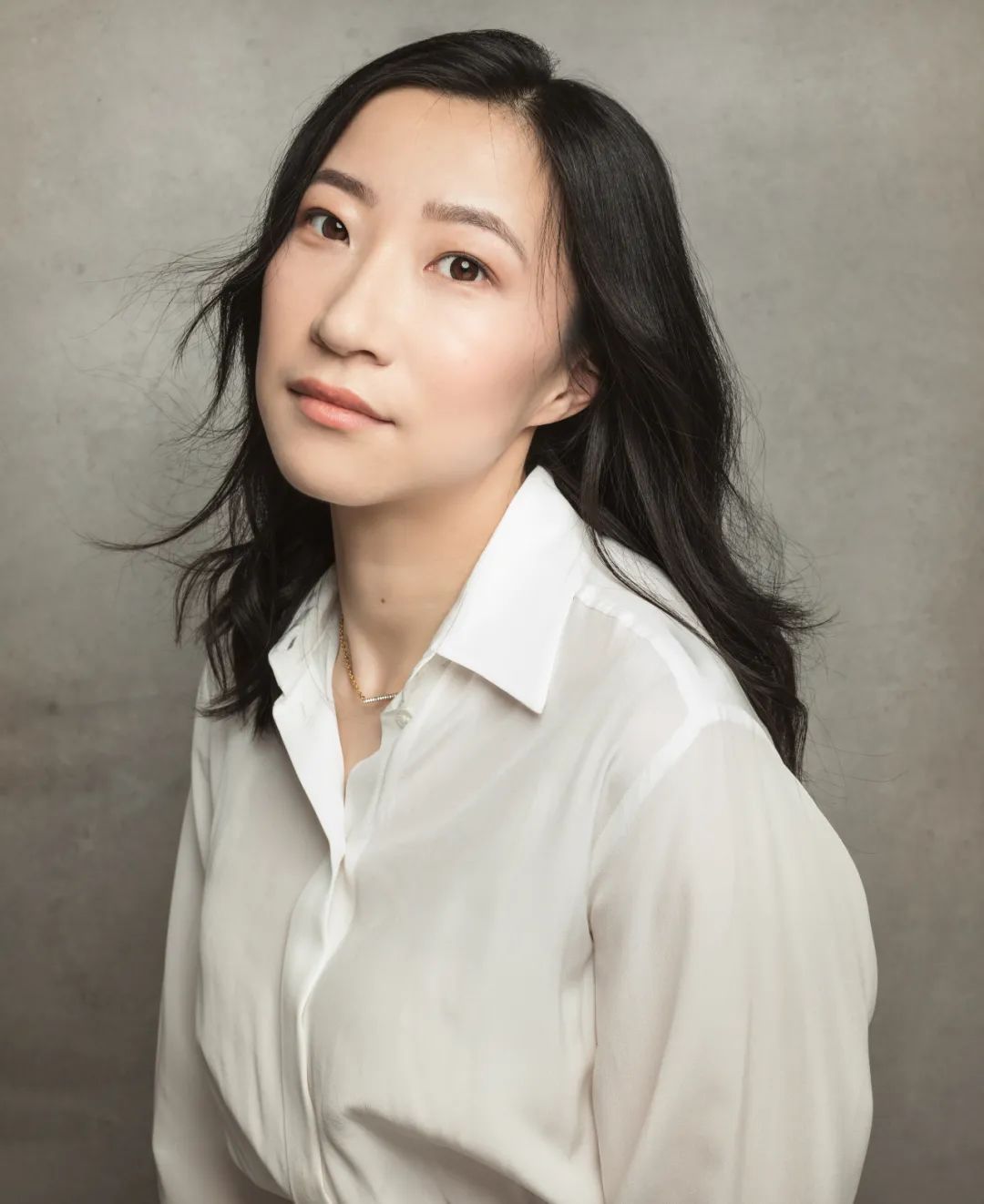
Portrait of Liu Jiayu

Portrait of Wang Yuyang

Portrait of Xu Lei
CAFA ART INFO: For the first time at the China Pavilion, an art group is invited to present works. What are your considerations regarding the choice?
Zhang Zikang: In the past, groups were often criticized for representing the collective will rather than individual academic achievements. The past Venice Biennale has also been awarded by individuals for several years in a row because the individual can better demonstrate his or her personality and originality. However, in recent years, there have been many group creations in both the international and domestic art fields, and the spirit of cooperation behind the group creations has been gradually recognized. Nowadays, the development of digital technology, the combination of technology and art, and data-based algorithms make a single person’s ideological depth and power often relatively thin. Instead, the team-working can gather and organize respective strengths from group members. An artist who generates new ideas in the interaction with science and technology can deliver the new idea to an unfamiliar field through technology. Meanwhile, art can also bring a fresh perspective to technology. In the combination of technology and art, the two promote and support each other to complete a work. Recently, both the China Central Academy of Fine Arts and Tsinghua University have been promoting the development of art and technology, and President Xi Jinping has addressed art and technology to a new level. The selection of collective creations at this time reflects the new forms, concepts, and languages of the current creations in China.
CAFA ART INFO: According to media reports, 90% of women artists participated in the theme exhibition of this Venice Biennale. The Chief Curator Cecilia Alemani said in an interview with the media, “the purpose of this biennale is not to confront men. On the contrary, our idea is to transcend the man/woman dualism that doesn't matter to the artist. This is an exhibition about post-anthropocentrism.” What do you think about this statement? Will the situation of the themed exhibition have an impact on the national pavilion or the exhibition you curate?
Zhang Zikang: When making the exhibition plan for “Meta-Scape”, I didn't know the ratio of female artists in the themed exhibition. In this male-dominated era, it is challenging and progressive to have an exhibition with such a large proportion of women artists. Cecilia Alemani has offered a deep reflection on the overall art phenomenon in recent years, and her exhibition plan is particularly closely connected with the current situation. The relationship between the individual and technology that her exhibition is concerned with has also been the focus of the Chinese art circles in recent years. Nowadays, there have been increasing international exhibitions that focus on female artists and the power of this community. In the complex international and domestic situations that are influenced and shaped by the war, the pandemic, commerce, and social environment changes, among others, the value of women has been further highlighted. Alemani’s choice not only gave us a surprise but also caused us to think in-depth. In today’s society, women’s social responsibilities and powers are increasing.

President Roberto Cicutto and Cecilia Alemani
Image from Cecilia Alemani’s Instagram, Photo by Andrea Avezzù
CAFA ART INFO: Does the exhibition in the China Pavilion continue your curatorial practice and curatorial philosophy?
Zhang Zikang: I pay more attention to cutting-edge exhibitions and cutting-edge artists. Several recent exhibitions I organized were also related to technology, such as “RONG-Source: Space Art Exhibition” in Shanghai Powerlong Museum at the end of last year, and “EVOLUTION-The Future of the Public” in Langfang, Hebei. I also take care of some cutting-edge artists such as Xu Bing, Song Dong, Yin Xiuzhen, Luc Tuymans, Anish Kapoor, and David Hockney. I have always been interested in new things and am currently curating a fully virtual exhibition of generative art that can only be viewed online. In general, the planning of the China Pavilion exhibition is based on the combination of my working accumulation and my concerns in terms of the cutting-edge dynamics of art.
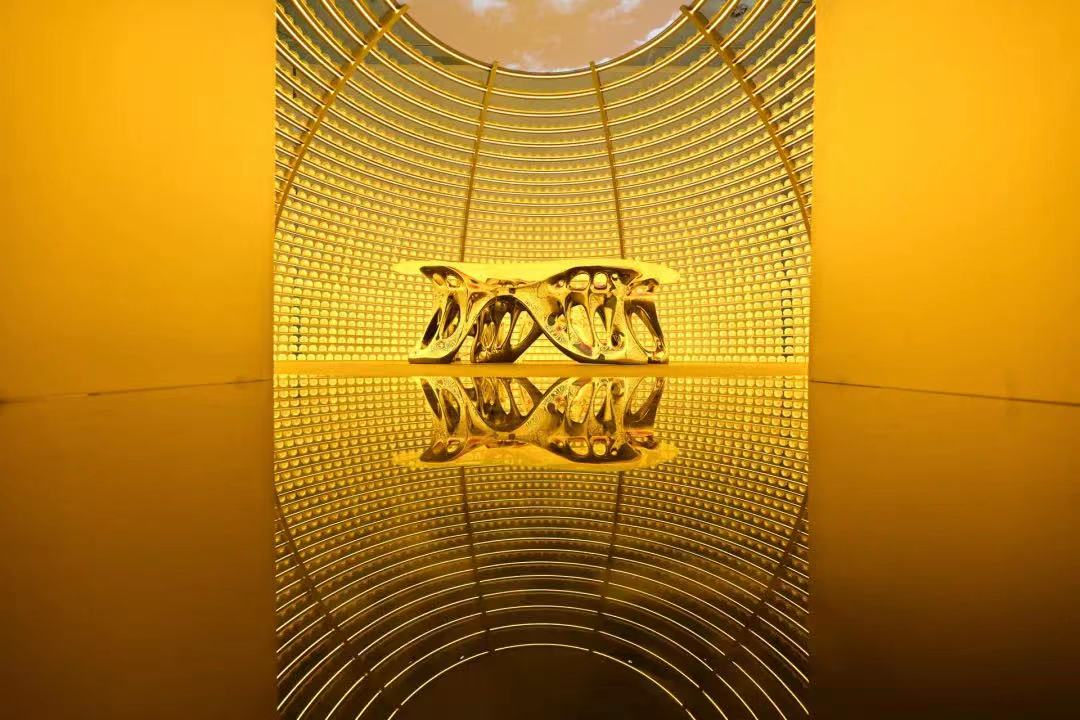
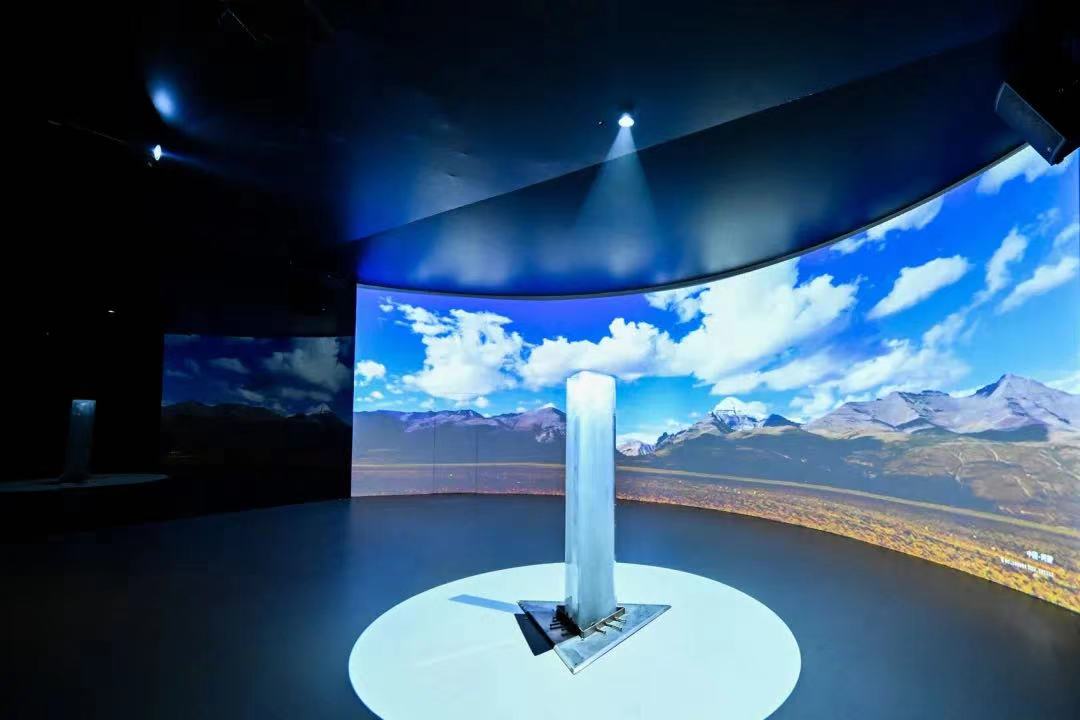
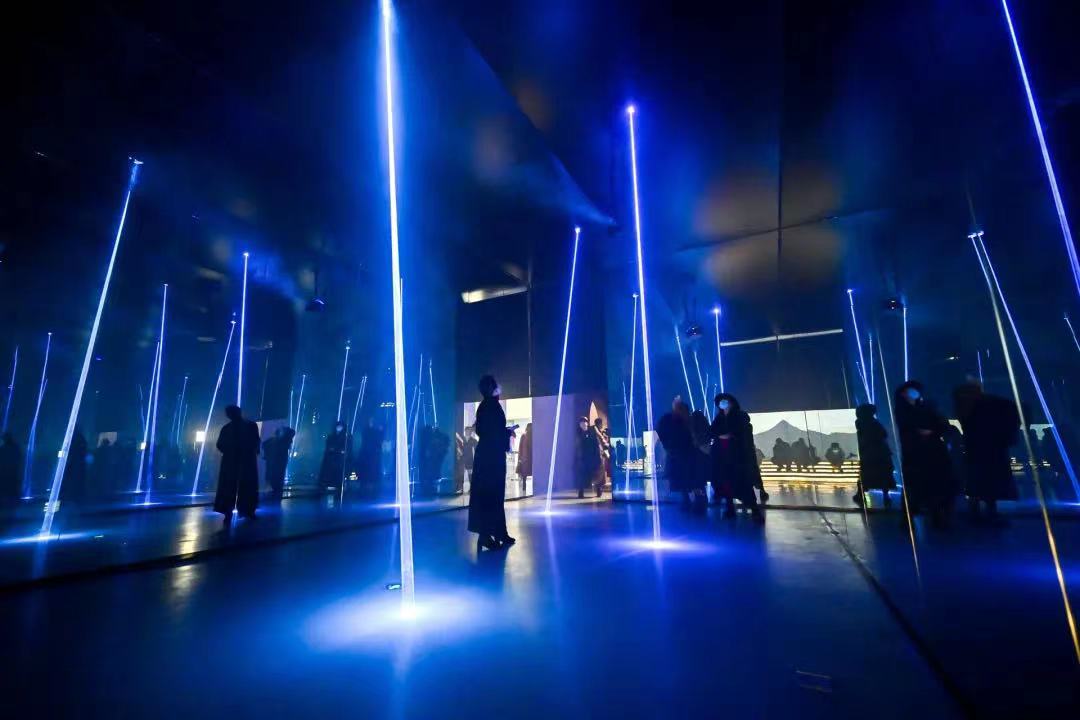
Installation View of “RONG-Source: Space Art Exhibition”
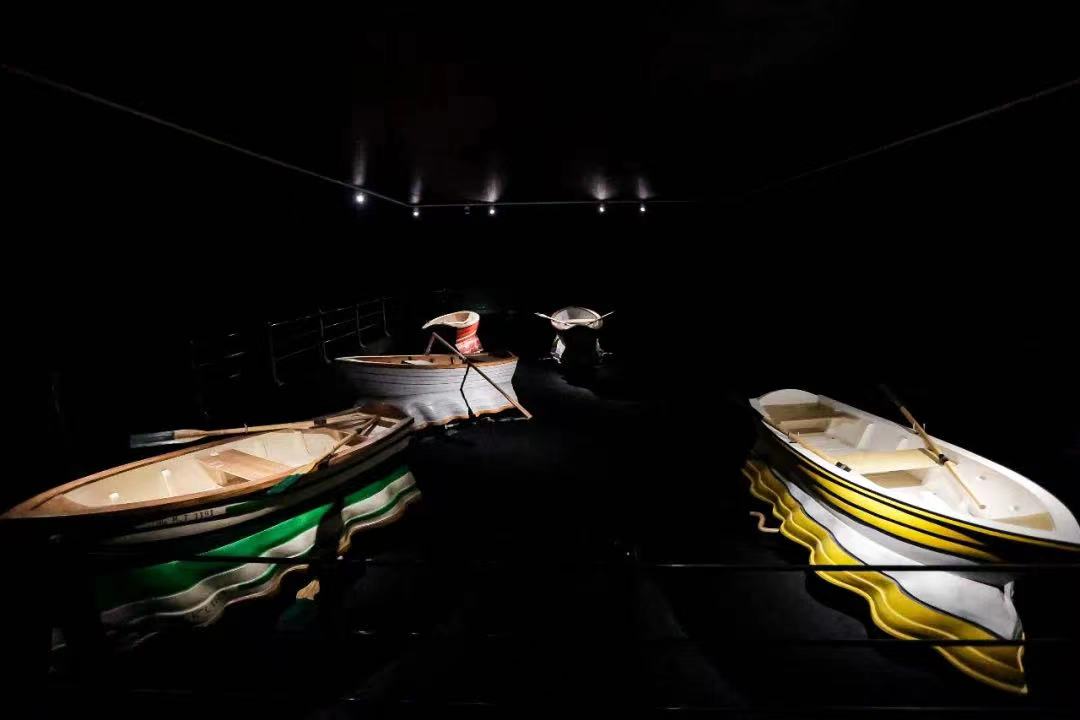


Installation View of “EVOLUTION-The Future of the Public”
CAFA ART INFO: Under the complex international situation with the pandemic and constant disputes, how do you view the role of art, or what can art do for us?
Zhang Zikang: From my point of view, under the general international situation, art can provide everyone with a multi-dimensional perspective to recognize, think and understand the various problems we are currently facing. This is a perspective that goes beyond our existing frame of mind, which I think is vitally important. Also, art can bring us a lot of imagination when facing the future, which will produce an insight from the mind to behavior when we make decisions. Under certain conditions, art can magnify some thinking and form a social effect. That is to say, the driving force of art to society can be stimulated in a new way under certain circumstances, and it will grow continually, and eventually become a driving force that affects the evolutionary logic and development direction of things. Although such a driving force in art is not as intuitive as political and economic forces, the impetus from art will be embodied when there are reflections and debates in the political and economic fields and people have to look for another perspective to discuss issues.
In an exhibition, art is more about giving people awareness of a social phenomenon or social problem from multiple perspectives. It inspires the audience to think about these issues and provides solutions indirectly. For instance, a scientist can be inspired by the fresh creativity of art in interdisciplinary aspects, so as to realize a new perspective for scientific research.
Article Source:https://www.cafa.com.cn/en/opinions/interviews/details/8331333

